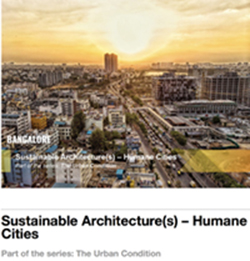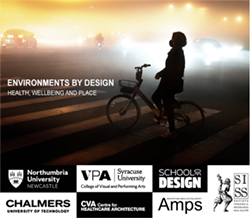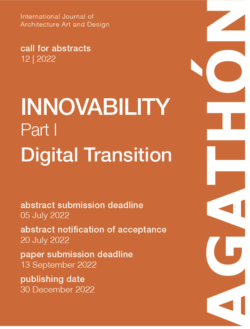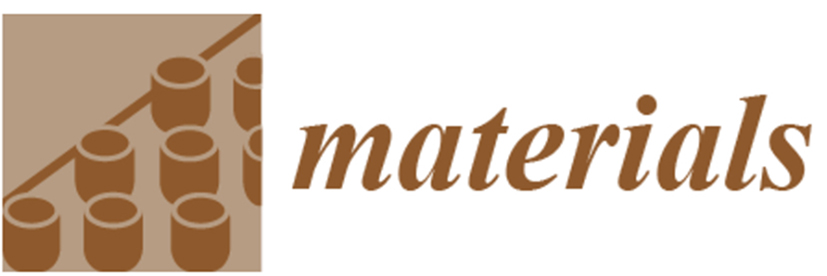ISSN (online): 1996-1944
Call of the Journal:
- Advanced Carbon Materials in Water Treatment or Separations Technology
- Advanced Functional Hybrid Materials for Novel Biomolecular Electronics
- Advances in Biomaterials | Design, Synthesis, Characterisation and Biomedical Application
- Advances in Construction and Building Materials
- Advances in Green Construction Materials
- Assessment of Metallurgical and Mechanical Properties of Welded Joints via Numerical Simulation and Experiments
- Carbon Compounds-Reinforced Ceramics
- Concrete and Waterproofing Materials | Development of Waterproofing Technology for Buildings and Civil Concrete Structures
- Corrosion Inhibitors for Steel | Experimental and Theoretical Studies
- Damage and Failure of Polymers, Polymer-Like Materials, Adhesives and Polymer Nanocomposites
- Development of Energy Storage or Conversion Element Based on Various Nano Materials
- Dyes | Synthesis, Properties, and Applications
- Dynamic Behavior of Ceramic Composites
- Flexible Sensors and Actuators for Novel Wearable Solutions
- Fundamentals and Applications of Bionano Sensor Techniques
- Graphene Foam Based Composites
- Growth and Application of Foam-Based Materials
- High Performance Concrete
- Hybrid Noble Metal/Graphene Aerogels | Synthesis, Characterization and Applications for Chemical Sensing and Biosensing
- Hydrogen Storage and Fuel Cells | Materials, Characterization and Applications
- Load Test and Numerical Analysis on Construction Materials
- Machining and Surface Properties of Steel Parts
- Materials under Extreme Conditions | Technologies for CRMs Reduction, Substitution and Recovery
- Microplastics and Nanoplastics | From Resource to Pollution
- Mineral-Bonded Composites for Enhanced Structural Impact Safety
- Modification and Processing of Biodegradable Polymers
- Nanostructured Semiconductors for Photoinduced Applications
- Novel Inorganic Adsorbents for Environmental Purification
- Numerical Simulation and Experimental Studies of Wave Phenomena in Composite Materials
- Performance Research of Polyurethane Foams and Composites
- Physics, Electrical and Structural Properties of Dielectric Layers
- Precision and Ultra-Precision Subtractive and Additive Manufacturing Processes of Alloys and Steels
- Processing and Thermal Properties of Hybrid Composites
- Recent Advances in 3D Printing for Biomaterials
- Recent Progress in the Development, Material Properties, and Post-Processing of Additively Manufactured Components
- Silica and Silica-based Materials for Biotechnology, Polymer Composites and Environmental Protection
- Study on the Modification and Compressive Properties of Concrete Buildings Materials
- Superconductors for Opto-Nano and Micro-Electro-Mechanical Systems (O-N/MEMS)
- Synthesis and Characterization of Hybrid Nanomaterials and Nanocomposites
- Synthesis, Properties and Applications of Polymer Blends
- Testing of Materials and Elements in Civil Engineering
- The Science and Technology of 3D Printing
Feb
2021
Mar
2021
Carbon compound-reinforced ceramics have emerged as one of the most promising materials that can effectively overcome the issue of the brittleness of ceramics, allowing for the development of reliable structural components for application in energy, automotive, aerospace, or medical industries. Carbon-based nanomaterials, such as carbon nanotubes or graphene, are being used as reinforcements for ceramic matrices due to their small size, high aspect ratio, and exceptional mechanical properties. Their incorporation into different ceramic matrices, such as Al2O3, Si3N4, or ZrO2, have led to an improvement in mechanical behavior, with stronger, tougher materials obtained. Such behavior positively affects other related properties, such as wear resistance or biocompatibility which, in turn, determine their extensive industrial utilization. Diverse toughening mechanisms, such as crack bridging, crack deflection, crack pinning, or crack deflection, have being proposed. All of these mechanisms critically depend on phase distribution within the matrix and, consequently, processing and fabrication techniques have become essential stage when designing such materials. In this Special Issue, research papers focused on carbon compound-reinforced ceramics, especially those that analyze new approaches to processing and fabrication of composite materials with improved mechanical properties, toughening mechanisms related to the interaction of crack propagation with carbon phases, and other properties directly related to fracture toughness such as wear resistance, thermal degradation, or thermal shock resistance, either using experimental or a modeling approaches.
Keywords: carbon-reinforced ceramics; carbon nanotubes; graphene; carbon nanofibers; fracture toughness; toughening mechanisms; wear resistance; thermal degradation.
Carbon Compounds-Reinforced Ceramics
Carbon compound-reinforced ceramics have emerged as one of the most promising materials that can effectively overcome the issue of the brittleness of ceramics, allowing for the development of reliable structural components for application in energy, automotive, aerospace, or medical industries. Carbon-based nanomaterials, such as carbon nanotubes or graphene, are being used as reinforcements for ceramic matrices due to their small size, high aspect ratio, and exceptional mechanical properties. Their incorporation into different ceramic matrices, such as Al2O3, Si3N4, or ZrO2, have led to an improvement in mechanical behavior, with stronger, tougher materials obtained. Such behavior positively affects other related properties, such as wear resistance or biocompatibility which, in turn, determine their extensive industrial utilization. Diverse toughening mechanisms, such as crack bridging, crack deflection, crack pinning, or crack deflection, have being proposed. All of these mechanisms critically depend on phase distribution within the matrix and, consequently, processing and fabrication techniques have become essential stage when designing such materials. In this Special Issue, research papers focused on carbon compound-reinforced ceramics, especially those that analyze new approaches to processing and fabrication of composite materials with improved mechanical properties, toughening mechanisms related to the interaction of crack propagation with carbon phases, and other properties directly related to fracture toughness such as wear resistance, thermal degradation, or thermal shock resistance, either using experimental or a modeling approaches.
Keywords: carbon-reinforced ceramics; carbon nanotubes; graphene; carbon nanofibers; fracture toughness; toughening mechanisms; wear resistance; thermal degradation.
ADS-Astrophysics Data System, AGORA(FAO), CAB Abstracts(CABI), Chemical Abstracts (ACS), Current Contents-Engineering, Computing & Technology (Clarivate Analytics), DOAJ, Ei Compendex/Engineering Village (Elsevier), Genamics JournalSeek, Global Health (CABI), HINARI (WHO), Inspec (IET), Journal Citation Reports/Science Edition (Clarivate Analytics), Julkaisufoorumi Publication Forum (Federation of Finnish Learned Societies), Norwegian Register for Scientific Journals, Series and Publishers (NSD), Polymer Library (Smithers Rapra), PubMed (NLM), Science Citation Index Expanded – Web of Science (Clarivate Analytics), Scopus (Elsevier), Web of Science (Clarivate Analytics), Zetoc (British Library), CLOCKSS (Digital Archive), e-Helvetica (Swiss National Library Digital Archive), PubMed Central (NLM), Academic OneFile (Gale/Cengage Learning), EBSCOhost (EBSCO Publishing), Energy & Power Source (EBSCO), Engineering Source (EBSCO), Google Scholar, J-Gate (Informatics India), Materials Science & Engineering (ProQuest).
Info at: www.mdpi.com/journal/materials/apc
Guest Editor
Prof. Dr. Felipe Gutiérrez-Mora









